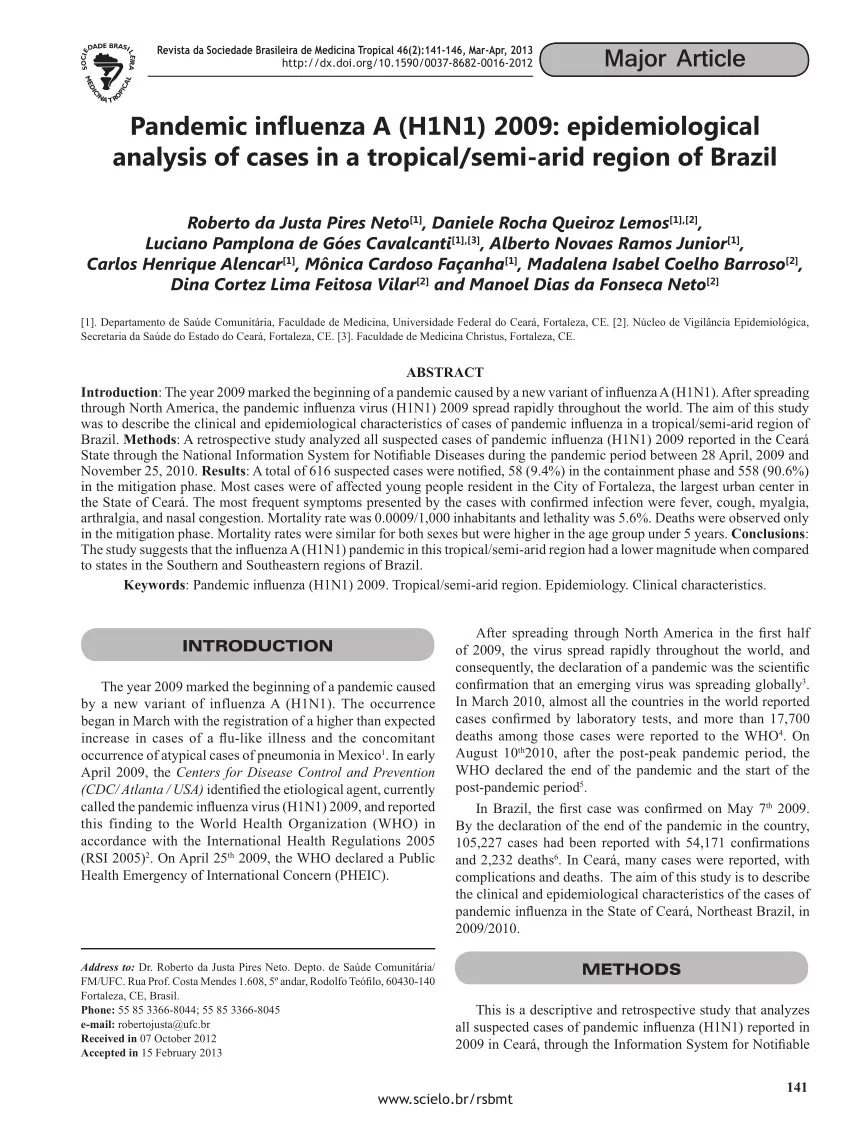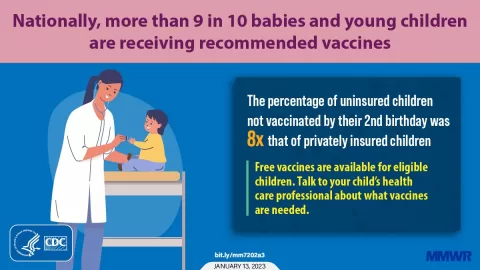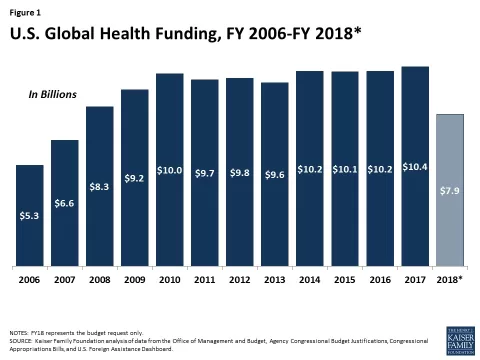In recent news, Brazil has reported a fatal case of H1N1v that has raised significant concern among health officials. This swine-origin H1N1 variant has been novel to the country, with the World Health Organization (WHO) confirming its sporadic pattern but reassuring that it has not led to human-to-human transmission. The tragic victim, a 42-year-old woman from Parana, began showing symptoms on May 1 and was hospitalized shortly after but sadly succumbed to the infection just four days later. This incident highlights the ongoing presence of H1N1 in Brazil and underscores the importance of monitoring swine-origin H1N1 cases as they emerge. As Brazil stays vigilant, the WHO continues to provide updates on H1N1 fatalities and emerging cases to keep the public informed.
The recent reports of H1N1 cases in Brazil have sparked discussions about the implications of swine flu in the region. Known as the swine-origin H1N1, this variant has shown a sporadic yet concerning presence, particularly in areas close to agricultural sites. With the latest casualty underscoring the potential severity of such infections, Brazilian authorities and the WHO are focused on tracking these occurrences to prevent further outbreaks. Public health officials are keen to emphasize the low likelihood of human transmission, alleviating fears amidst the ongoing surveillance of H1N1 variants like H1N2v. As updates on H1N1 Brazil news continue to evolve, awareness and readiness remain critical in safeguarding communities.
Understanding H1N1v Cases in Brazil
In recent news, Brazilian health officials have shed light on the first reported case of the swine-origin H1N1 variant (H1N1v) for 2023. This case involved a 42-year-old woman from Parana, with pre-existing health conditions that underscored the seriousness of her illness. Despite the sporadic nature of H1N1v cases in Brazil, the World Health Organization (WHO) has emphasized that there is no indication of sustained human-to-human transmission. Officials track H1N1v cases closely, focusing on the epidemiology and outbreak patterns within the country to ensure public health safety surrounding swine-origin variants.
In terms of background, the history of H1N1 in Brazil has highlighted seasonal variations, with previous cases noted in 2021 and 2022. These isolated incidents, although concerning, have shown that the overall risk of H1N1v impacting the broader population remains relatively low, and major outbreaks have not necessarily been a consequence. The Brazilian government continues to monitor health indicators and will liaise with the WHO for any necessary updates regarding H1N1 Brazil news.
Additionally, the WHO has been proactive in disseminating information regarding H1N1 traits, symptoms, and preventive measures. Continuous updates help health authorities in Brazil remain vigilant about potential variant flu viruses like H1N1v and H1N2v. Understanding how these viruses interact with humans is critical, especially for those with underlying health issues. Brazil’s sporadic cases are also a reminder of the need for vaccination and preventive health practices amidst swine flu variants. Future public health strategies may evolve as more data comes in from any new cases reported, ensuring the Brazilian population stays well-informed.
Impact and Responses to H1N1 Fatalities
The recent death of the patient from Parana due to H1N1v emphasizes the potential severity of the infection, particularly for individuals with pre-existing health problems. Such fatalities raise crucial questions about the healthcare response in Brazil — how to monitor, treat, and communicate the risks associated with swine-origin H1N1 infections. Health officials are tasked with balancing awareness and preventive measures without inciting undue panic among the population. Understanding that H1N1 fatalities are generally rare helps maintain public health stability while ensuring that necessary precautions are adhered to.
Furthermore, the WHO continues to advocate for enhanced surveillance of H1N1v and other flu viruses. With technology and scientific advancements, timely updates on the status of H1N1 variants can be shared not only within Brazil but globally. This collaborative effort is designed to prevent any potential escalation into widespread outbreaks, especially with human infections of variant flu viruses often leading to mild cases. Rigorous tracking and reporting are essential tools in combating this influenza threat effectively.
Reports indicated that the woman in question lived in proximity to a swine farm, highlighting a potential link to swine-origin H1N1 exposure. This raises awareness about the importance of biosafety measures in agricultural settings and the implications for human health. Despite no direct contact with swine, the two contacts who worked on the farm were tested and found free of symptoms, showcasing the complexity of transmission dynamics. Public health messaging in Brazil will need to carefully convey how to mitigate risks associated with variant H1N1 strains while informing communities about safety protocols around livestock. When fatalities occur, it furthers the need for health education to enhance community preparedness for illness and to underscore the critical importance of vaccination programs.
The Role of WHO in Monitoring H1N1 Variants
The World Health Organization (WHO) plays a pivotal role in global health, particularly in tracking and responding to H1N1 variant outbreaks across countries, including Brazil. The recent confirmation of an H1N1v case has prompted the WHO to issue statements focused on the virus’s sporadic nature. As the agency monitors H1N1 Brazil news, it also stresses the need for vigilance against potential surges while reassuring the public that human-to-human transmission has not been detected. This collaborative relationship between the WHO and national health officials allows for data-driven responses tailored to local needs and challenges.
In addition to tracking cases, the WHO provides vital updates regarding flu seasons, including guidelines for public health policies against H1N1 variants. WHO recommendations often include vaccination strategies to protect vulnerable populations and to reduce the likelihood of severe outcomes. Their support also extends to monitoring livestock health practices to minimize the risk of swine-origin viruses affecting humans. As Brazil continues to report sporadic H1N1v cases, the WHO remains a critical player in ensuring that both health authorities and the public stay informed and prepared.
Preventive Strategies Against H1N1 Infection
Effective prevention of H1N1 infections, especially swine-origin variants like H1N1v in Brazil, requires a multifaceted public health approach. Health officials encourage vaccination efforts targeting at-risk populations to reduce hospitalizations and fatalities. Vaccines have historically proven successful in mitigating the spread of influenza, and ongoing campaigns in Brazil aim to achieve higher immunization rates. Enhanced public awareness campaigns are key to educating the community about flu symptoms, transmission mechanisms, and the importance of reporting flu-like symptoms early to health authorities.
Simultaneously, personal hygiene practices such as regular hand washing, respiratory etiquette, and avoiding close contact with infected individuals are emphasized. Additionally, by promoting animal health practices within agricultural settings, Brazil strives to monitor swine farms closely for any signs of viral transmission. These interconnected strategies not only bolster the health of individual citizens but also contribute to community resilience against H1N1v infections and other variants in the flu landscape.
Analyzing the Epidemiology of H1N1v
Understanding the epidemiology of H1N1v in Brazil involves studying the patterns, causes, and effects of the swine-origin variant in the region. Health experts observe that cases tend to remain sporadic, with few severe instances occurring among individuals with underlying health issues. Sequential data collection, alongside genomic sequencing, allows health officials to congregate insights on how H1N1v relates to past outbreaks, including existing variants of the virus. This comprehensive view is critical in anticipating and managing future cases, particularly in high-risk areas.
Furthermore, analyzing the connections between reported H1N1v cases and environmental factors, such as proximity to swine farms, enhances the understanding of transmission pathways. The exploration of behavioral patterns and vaccination uptake rates can illuminate areas needing targeted health interventions. As Brazil’s health organizations build greater epidemiological models, they can better prepare for addressing and mitigating H1N1v effectively in light of any emerging H1N1 variant threats.
Public Health Messaging on H1N1 Awareness
To combat the spread and impact of H1N1v, effective public health messaging is indispensable. Health authorities in Brazil must focus on accurate and timely information dissemination regarding symptoms, adequacy of treatments, and preventive health measures. Misinformation can exacerbate fears surrounding influenza outbreaks, leading to public misunderstanding of the virus’s severity and transmission pathways. An informed population is crucial to ensuring compliance with health regulations and recommendations from the WHO, which can lead to better health outcomes.
Moreover, community engagement plays a significant role in reinforcing public health efforts. By harnessing local leaders and influencers, health agencies can enhance communication about the dangers posed by H1N1 variants while promoting vaccination and hygiene practices. Educational campaigns that are culturally sensitive and linguistically appropriate are essential to reaching diverse populations and ensuring broad understanding of H1N1-related issues throughout Brazil.
The Future of H1N1 Research in Brazil
As Brazil faces isolated cases of H1N1v, the future of research into swine-origin H1N1 variants is critical for enhancing national health strategies. Scientific focus on virology, transmission mechanisms, and vaccine development will inform public health responses not only within Brazil but across similar regions experiencing H1N1 outbreaks. Collaborative research efforts can lead to enhanced diagnostics and treatment options, thus preparing Brazil for any unforeseen rise in variant flu cases and the subsequent potential for more severe health impacts.
In the forthcoming years, Brazil’s commitment to ongoing surveillance and research will solidify its position as a proactive player in managing potential H1N1 outbreaks. The emphasis on integrating findings from local studies, coupled with WHO insights, can ultimately foster better preparation strategies against future H1N1 variants and enhance overall preparedness for emerging infectious diseases.
Global Collaboration in H1N1 Variant Management
Global collaboration is of paramount importance in managing H1N1 variants, as demonstrated by the WHO’s continuous engagement with member nations like Brazil. The sharing of data and best practices enables a collective approach to combat variants that may emerge due to environmental changes or zoonotic events. The situation in Brazil, particularly its sporadic H1N1v cases, signifies a wider phenomenon that requires a multifaceted response involving international health regulations and frameworks that bolster preparedness and response capabilities.
Efforts such as joint research initiatives, workshops, and global surveillance systems, facilitate the interchange of valuable insights and innovations in tracking and studying H1N1 variants. Brazil’s involvement in global health partnerships ensures that local health authorities have access to the latest research and developments hailing from around the world, which can subsequently inform public health decisions. Ultimately, a united front against H1N1 variants fosters resilience against flu pandemics while safeguarding public health across borders.
Frequently Asked Questions
What are the recent H1N1v cases in Brazil and their implications?
The most recent H1N1v case reported in Brazil involves a 42-year-old woman from Parana with pre-existing health issues. She succumbed to the infection within days of developing symptoms. This case, confirmed by the World Health Organization (WHO), highlights that Brazil continues to see sporadic cases of the swine-origin H1N1 variant. Although most infections with H1N1 are mild, some can be severe or fatal, emphasizing the importance of vigilance in monitoring such influenza variants.
How does the swine-origin H1N1 variant affect public health in Brazil?
The swine-origin H1N1 variant, known as H1N1v, poses a sporadic risk to public health in Brazil, as evidenced by the recent fatality in Parana. The WHO has confirmed that there is currently no evidence of human-to-human transmission in this case, but public health officials remain on alert due to the potential for severe outcomes in some individuals. Regular updates and monitoring are essential to mitigate risks from H1N1 Brazil news.
What is the WHO’s stance on H1N1 fatalities in Brazil?
The WHO recognizes the recent H1N1v fatality in Brazil as part of a sporadic pattern of cases. Although human infections are typically mild, there can be severe outcomes, including fatalities, particularly among those with underlying health conditions. The organization continues to monitor H1N1 Brazil news closely and advises on prevention strategies to minimize transmission risks.
Are there any reported human-to-human transmissions of H1N1v in Brazil?
No, there have been no confirmed cases of human-to-human transmission of H1N1v in Brazil, according to recent investigations and WHO confirmations. The latest H1N1v case involved a woman who lived near a swine farm but did not have direct contact with animals, and her close contacts have not shown symptoms of the virus.
What preventive measures are recommended against H1N1v in Brazil?
To prevent infection with H1N1v and other influenza variants, it is recommended to practice good hygiene such as frequent handwashing, avoiding close contact with sick individuals, and staying informed through WHO H1N1 updates. Vaccination against seasonal influenza is also advised, as it may offer some cross-protective benefits against H1N1 variants.
| Key Point | Details |
|---|---|
| Fatal Case Reported | Brazilian health officials have reported one fatal case of H1N1v to the WHO. |
| Patient Profile | The patient was a 42-year-old woman from Parana with pre-existing health issues. |
| Symptoms and Hospitalization | The woman began showing symptoms on May 1 and was hospitalized on May 3. |
| Confirmation of Virus Variant | Testing confirmed the virus was a swine-origin variant (H1N1v) similar to previous samples. |
| Location of Patient | She lived near a swine farm, though had no direct contact with pigs. |
| Close Contacts’ Health | Two close contacts worked at the farm but showed no symptoms or positive tests. |
| No Human-to-Human Transmission | The WHO confirmed no signs of human-to-human transmission in this case. |
| Background on H1N1v Cases | This case marks Brazil’s first H1N1v of 2023; previous cases were reported in 2021 and 2022. |
| Severity of Infections | While many infections are mild, there can be severe and fatal cases. |
Summary
H1N1v cases in Brazil have recently come into focus following a reported fatal case involving a 42-year-old woman from Parana. This unfortunate incident exemplifies the sporadic pattern of H1N1v infections in the country, reinforcing the importance of monitoring and public health measures. Although the risk of human-to-human transmission remains low, continued vigilance in surveillance and reporting is essential to managing such variant infections effectively. The WHO’s confirmation of this case highlights the need for proactive health initiatives to safeguard the population against potential outbreaks.
The content provided on this blog (e.g., symptom descriptions, health tips, or general advice) is for informational purposes only and is not a substitute for professional medical advice, diagnosis, or treatment. Always seek the guidance of your physician or other qualified healthcare provider with any questions you may have regarding a medical condition. Never disregard professional medical advice or delay seeking it because of something you have read on this website. If you believe you may have a medical emergency, call your doctor or emergency services immediately. Reliance on any information provided by this blog is solely at your own risk.








